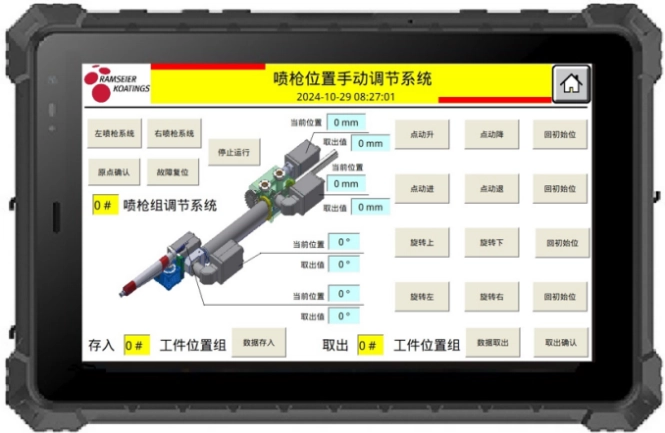Content Menu
● Understanding Manual Controls and Integrated Control Systems
>> What Are Manual Controls?
>> What Are Integrated Control Systems?
● Efficiency Comparison: Integrated Control Systems vs. Manual Controls
>> Control Precision and Accuracy
>> Operational Consistency and Reliability
>> Real-Time Data and Responsiveness
>> Labor and Cost Efficiency
>> Integration and System Coordination
>> Energy Efficiency and Optimization
● Advantages of Integrated Control Systems
● Limitations and Challenges of Integrated Control Systems
● When Are Manual Controls Preferable?
● Making the Right Choice: Factors to Consider
● Conclusion
● Related Questions and Answers
● Citations:
In the evolving landscape of industrial operations, building management, and security systems, the debate between integrated control systems and manual controls remains pivotal. Organizations face the challenge of choosing between traditional manual methods and modern integrated automation to optimize efficiency, reduce costs, and improve reliability. This article explores the key differences, advantages, and limitations of integrated control systems compared to manual controls, helping decision-makers understand which approach is more efficient for their needs.

Understanding Manual Controls and Integrated Control Systems
What Are Manual Controls?
Manual controls refer to systems where human operators directly manage and adjust processes or equipment. These controls rely heavily on human judgment, physical intervention, and periodic monitoring. Examples include manually adjusting HVAC settings, security patrols, or operating machinery based on visual inspections.
What Are Integrated Control Systems?
Integrated control systems combine multiple control functions into a single, automated platform. These systems use sensors, software, and networked devices to monitor and adjust processes in real time without requiring constant human intervention. Integration allows for seamless communication between subsystems such as HVAC, lighting, security, and production lines, enabling centralized control and automation.
Efficiency Comparison: Integrated Control Systems vs. Manual Controls
Control Precision and Accuracy
Manual controls often depend on subjective human judgment, which can lead to inconsistencies and errors. Operators may miss subtle changes or delays in responding to deviations, resulting in variable process quality.
In contrast, integrated control systems provide precise, consistent control by continuously monitoring critical parameters such as temperature, pressure, and flow rates. Automated adjustments occur in real time, minimizing deviations and ensuring optimal operating conditions[5][8].
Operational Consistency and Reliability
Manual systems are prone to variability due to fatigue, human error, and inconsistent attention. This can lead to fluctuations in product quality, increased waste, and operational interruptions.
Integrated systems operate 24/7 without fatigue, providing reliable and repeatable control. They detect and correct problems within milliseconds, eliminating lengthy manual troubleshooting and reducing downtime[5].
Real-Time Data and Responsiveness
Manual controls typically involve sporadic checks and manual recordkeeping, which can delay problem detection and resolution.
Integrated systems offer real-time data collection and analysis, enabling immediate identification of deviations and swift corrective actions. This responsiveness enhances throughput and reduces waste[3][5].
Labor and Cost Efficiency
Manual controls require more labor for monitoring, adjustments, and recordkeeping, increasing operational costs and limiting scalability.
Automated integrated systems reduce labor needs by performing control actions autonomously. Operators can focus on higher-value tasks, and the system can scale easily without extensive rework[5][6].
Integration and System Coordination
Manual controls often operate in silos, leading to bottlenecks and inefficiencies when different systems do not communicate effectively.
Integrated control systems unify multiple subsystems, eliminating operational bottlenecks and enabling smooth coordination. This integration supports better material flow, fewer delays, and a more responsive overall system[3][11].
Energy Efficiency and Optimization
Manual systems may lack advanced energy-saving features due to limited programmability and optimization capabilities.
Controller-based integrated systems optimize energy consumption by adjusting operations based on occupancy patterns, external conditions, and real-time data, resulting in significant energy savings[8].
Advantages of Integrated Control Systems
- Improved Operational Efficiency: Centralized control and automation reduce delays and errors, enhancing productivity.
- Enhanced Quality Control: Precise, real-time adjustments improve product consistency and yield.
- Reduced Labor Costs: Automation lowers the need for constant human oversight.
- Scalability: Systems can expand or adapt with minimal disruption.
- Better Compliance and Risk Management: Integrated systems maintain accurate records and improve data security, aiding regulatory compliance[11].
Limitations and Challenges of Integrated Control Systems
- Complex Implementation: Integrating multiple systems requires careful planning and expertise.
- Initial Investment: Higher upfront costs compared to manual controls.
- Change Management: Staff may resist transitioning from familiar manual methods.
- Potential Overcomplexity: In some cases, integration may introduce unnecessary bureaucracy or reduce focus on specialized areas[6].
When Are Manual Controls Preferable?
- In small-scale operations where automation costs outweigh benefits.
- Situations requiring human judgment that cannot be easily automated.
- Environments where existing manual systems are functioning effectively without significant issues.
Making the Right Choice: Factors to Consider
- Cost-Benefit Analysis: Evaluate upfront investment versus long-term savings.
- Operational Complexity: More complex processes benefit more from integration.
- Scalability Needs: Consider future growth and adaptability.
- Regulatory Requirements: Integrated systems often facilitate compliance.
- Human Resource Availability: Assess labor costs and skill levels.
Conclusion
Integrated control systems generally offer superior efficiency compared to manual controls by providing precise, consistent, and real-time management of processes. They reduce labor costs, improve product quality, enhance energy efficiency, and enable better coordination across systems. However, the decision to adopt integrated controls should consider the specific operational context, costs, and organizational readiness. Manual controls may still be suitable for simpler or smaller-scale applications, but as industries advance, integrated systems increasingly represent the future of efficient and reliable control.
---
Related Questions and Answers
Q1: What are the main benefits of integrated control systems over manual controls?
A1: Integrated control systems provide higher precision, real-time adjustments, operational consistency, reduced labor costs, and better scalability compared to manual controls.
Q2: Can integrated control systems completely replace manual controls?
A2: While integrated systems automate many functions, some manual oversight and human judgment remain necessary, especially for complex decisions or unusual situations.
Q3: What challenges might organizations face when implementing integrated control systems?
A3: Challenges include high initial costs, complexity of integration, staff resistance to change, and potential overcomplexity in some cases.
Q4: How do integrated control systems improve energy efficiency?
A4: They optimize operations by adjusting parameters based on real-time data and external conditions, reducing unnecessary energy consumption.
Q5: Are manual controls still relevant in modern industrial environments?
A5: Yes, manual controls may be relevant in small-scale operations or where human judgment is critical, but integrated systems are generally more efficient for larger or more complex processes.

---
Citations:
[1] https://auditboard.com/blog/automated-controls-and-sox-testing/
[2] https://www.schellman.com/blog/soc-examinations/automated-or-manual-soc-controls
[3] https://oscocontrols.com/blog/modern-control-systems-optimizing-efficiency-through-system-integration/
[4] https://finance.cornell.edu/controller/internalcontrols/designing
[5] https://www.proconexdirect.com/blog/2024/from-manual-to-modern/
[6] https://www.linkedin.com/pulse/advantages-disadvantages-integrated-management-system-mohamed-hashi
[7] https://www.ee.cityu.edu.hk/~gchen/pdf/Writing.pdf
[8] https://ecsksa.com/blog/hvac-control-panel-manual-vs-controller-based-systems/
[9] https://www.avigilon.com/blog/integrated-access-control
[10] https://baike.baidu.com/item/%E8%87%AA%E5%8A%A8%E5%8C%96%E4%B8%93%E4%B8%9A%E8%8B%B1%E8%AF%AD/1467615
[11] https://www.concur.com/blog/article/what-is-system-integration-and-what-are-its-advantages
---
Hot Tags: China, Global, OEM, private label, manufacturers, factory, suppliers, manufacturing company










































 .
. 